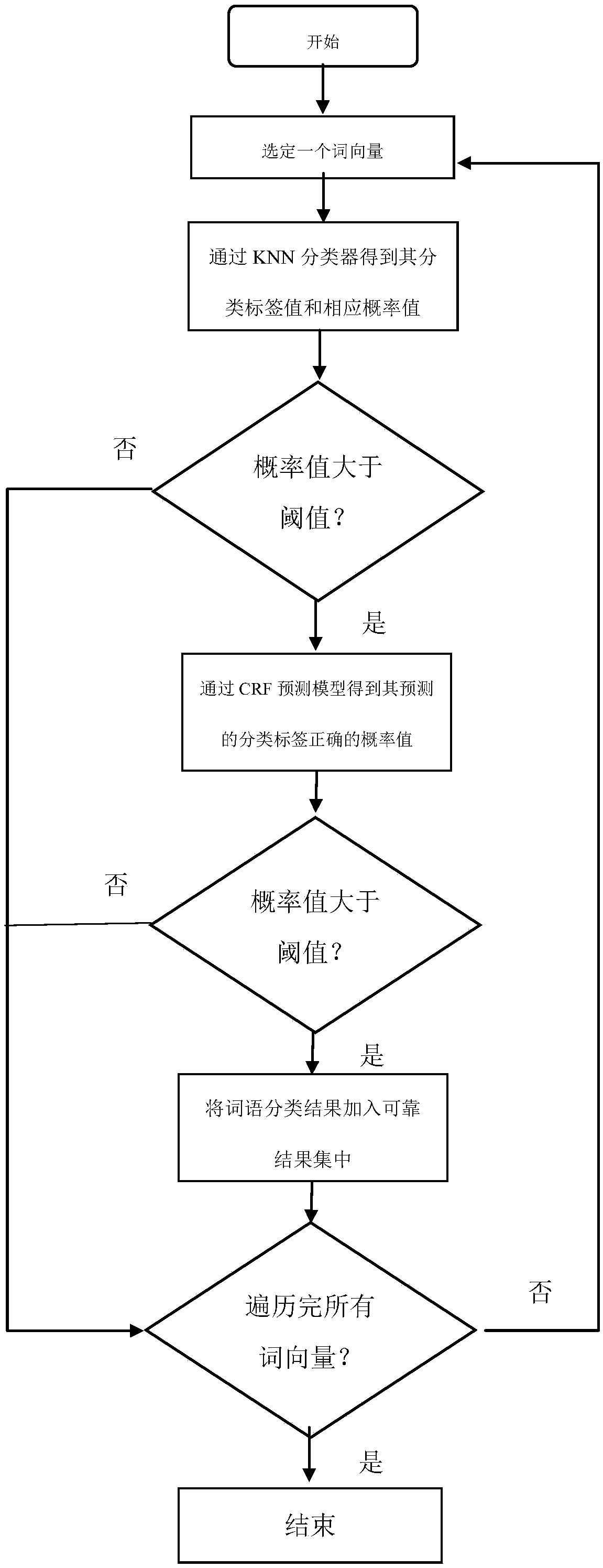Open domain Chinese text naming entity identification method based on semi-supervised learning
A named entity recognition and semi-supervised learning technology, applied in special data processing applications, instruments, electrical digital data processing, etc., can solve the problems of named entity nesting, difficult to guarantee database data, time-consuming and labor-intensive problems, and achieve the effect of improving efficiency
- Summary
- Abstract
- Description
- Claims
- Application Information
AI Technical Summary
Problems solved by technology
Method used
Image
Examples
Embodiment Construction
[0062] In order to better understand the technical content of the present invention, specific embodiments are given and described as follows with reference to the accompanying drawings. First, word segmentation is performed on the training data, and then the word vectors represented in the distributed form of words in the training text are obtained by using the word vector space constructed by the word2vec tool; using the word vectors in the training set and the existing entity type labels of each word vector, the The KNN classifier and the CRF tagger are trained to generate a prediction model of the KNN-CRF named entity category; in the model prediction stage, an empty reliable result set is introduced, and whenever a new prediction result is generated by the prediction, it is added to the reliable result set; when When the number of reliable result sets reaches the threshold, discard the previous KNN and CRF models, add the results of the reliable result set to the training s...
PUM
 Login to View More
Login to View More Abstract
Description
Claims
Application Information
 Login to View More
Login to View More - R&D
- Intellectual Property
- Life Sciences
- Materials
- Tech Scout
- Unparalleled Data Quality
- Higher Quality Content
- 60% Fewer Hallucinations
Browse by: Latest US Patents, China's latest patents, Technical Efficacy Thesaurus, Application Domain, Technology Topic, Popular Technical Reports.
© 2025 PatSnap. All rights reserved.Legal|Privacy policy|Modern Slavery Act Transparency Statement|Sitemap|About US| Contact US: help@patsnap.com



